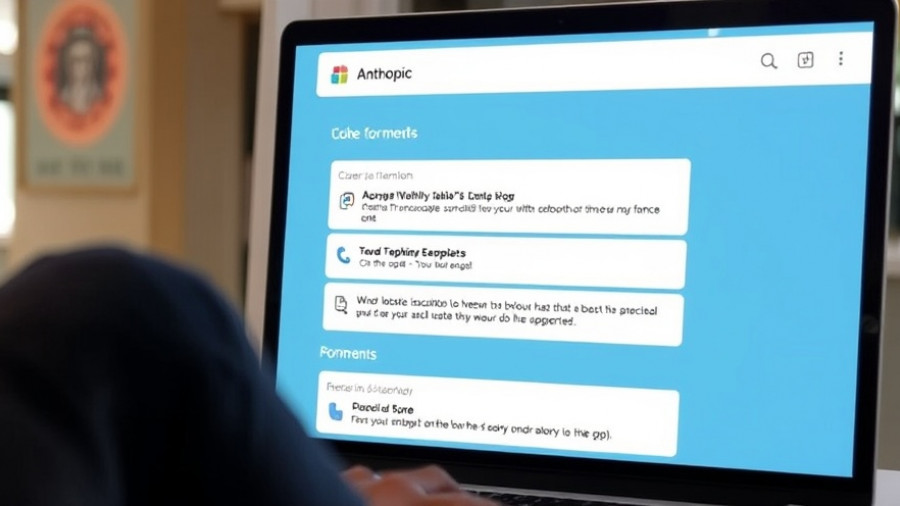
The Emerging Flexibility of AI: Introducing Claude API
In a world increasingly reliant on artificial intelligence, the debut of Claude API is shaking up how developers harness machine learning capabilities for their applications. Tailored for the needs of variable and high-volume scenarios, this API emphasizes flexibility through a pay-per-use model. As industries continue to innovate, Claude API's unique pricing and structural framework is emerging as a pivotal solution for developers looking to optimize their AI integration.
Understanding Pay-Per-Use AI Solutions
The primary advantage of the Claude API is its pay-per-use billing structure, which means developers only pay for the actual tokens they use, with no limits on the call volume. This approach not only grants cost control but also makes advanced AI more accessible across different sectors. Whether it’s for a startup with fluctuating data needs or a larger enterprise handling a substantial volume of tasks, this model allows for adaptable budgeting in today's fast-paced digital landscape.
Diverse Models for Diverse Needs
Claude API comes equipped with several AI models tailored to specific tasks. For instance, the Claude 4.1 Opus model is designed for intricate reasoning and research, making it suitable for sectors like finance and scientific research that require rigorous computational capabilities. In contrast, the Claude 3.5 Haiku is optimized for straightforward tasks and boasts the lowest cost, perfect for applications needing repetitive, high-volume processes.
Meanwhile, the Claude 3.5 Sonnet model strikes a balance between power and affordability, making it versatile enough to handle daily activities or document processing seamlessly. As AI demands become sophisticated, having multiple pricing tiers based on complexity ensures that companies don’t overspend while still having access to cutting-edge technology.
Integrating Claude API: What Developers Need to Know
Integration is a breeze with the Claude API, which actively supports popular frameworks like Node.js. Developers can take advantage of the API by following detailed documentation tailored for various operating systems, including Windows, Linux, and macOS. With step-by-step installation guides, developers can swiftly set up the necessary environment and get started on their projects. The clarity offered by these resources reduces the friction typically associated with API integrations.
Case Studies: Real-World Applications of Claude API
Companies have already begun leveraging Claude API’s flexibility to enhance their workflows. For instance, a customer support startup integrated the Claude 3.5 Sonnet model into their chatbot, optimizing their responses based on customer interactions while keeping costs in check. This strategic choice highlights yet another possibility—to drive efficiency while achieving outstanding user experience.
Furthermore, specialist firms, such as DeepSeek, utilize the API for batch processing and analysis, allowing them to scale without sacrificing performance. The versatility of Claude API opens doors for countless industries, fostering innovation in artificial intelligence solutions.
Looking Ahead: The Future of AI Flexibility
As AI technology continues to evolve, the Claude API exemplifies a promising direction where flexibility and cost-efficiency become central to development strategies. The combination of a broad model offering and a pay-per-use billing structure could drive significant growth in sectors aggressively seeking to adopt AI in meaningful ways.
With further advancements on the horizon, keeping an eye on improvements to this model could yield exciting opportunities for developers, businesses, and customers alike, potentially revolutionizing how AI capabilities are practically applied.
 Add Row
Add Row  Add
Add 




Write A Comment